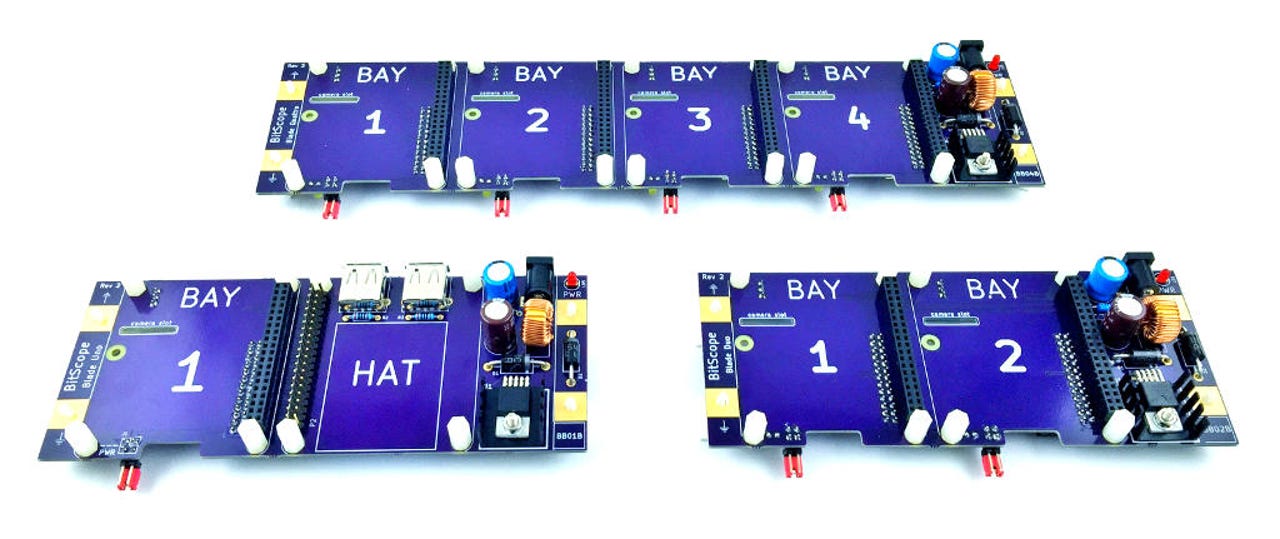Raspberry Pi: These blades can turn your Pis into PCs, servers, routers, and workstations


These blades make it easier to build bigger Pi-powered devices.
While most people are happy enough with one Raspberry Pi, the more adventurous may want to combine multiple Pis to build more powerful devices.
element14 is now selling blades developed by Bitscope that can power and hold multiple Raspberry Pis. They are designed to make it easier to build more powerful computing devices that might use more than one Pi -- like servers, routers, workstations, or industrial IoT systems.
The blades allow access to the Raspberry Pi I/O for displays, cameras, keyboards, expansion boards, and peripherals. They can be used with plug packs, 12V batteries, solar power systems, low cost uninterruptible power supplies, or passive power over Ethernet (PoE) up to 48V, and can be be installed in racks for even larger deployments.
The BitScope Blade is available in three editions, each based upon the number of Raspberry Pi boards that can be installed: the BitScope Blade Uno for one Pi is aimed at makers and students. The Blade Duo is a desktop, rack, or wall-mountable option for a brace of Pi boards and could be used for desktops or servers. The Quattro fits four Pi computers, which element14 said could be used for creating compute clusters or even private clouds.
Claire Doyle, element14's head of single board computing, said the company is working with an increasing number of startups using the Raspberry Pi for commercial and industrial use.
In the UK, the Uno sells at £32.50, the Duo at £36.50, and the Quattro at £41 -- all prices are before tax. The BitScope Blades are available from Farnell element14 in Europe, Newark element14 in North America, and element14 in Asia Pacific.